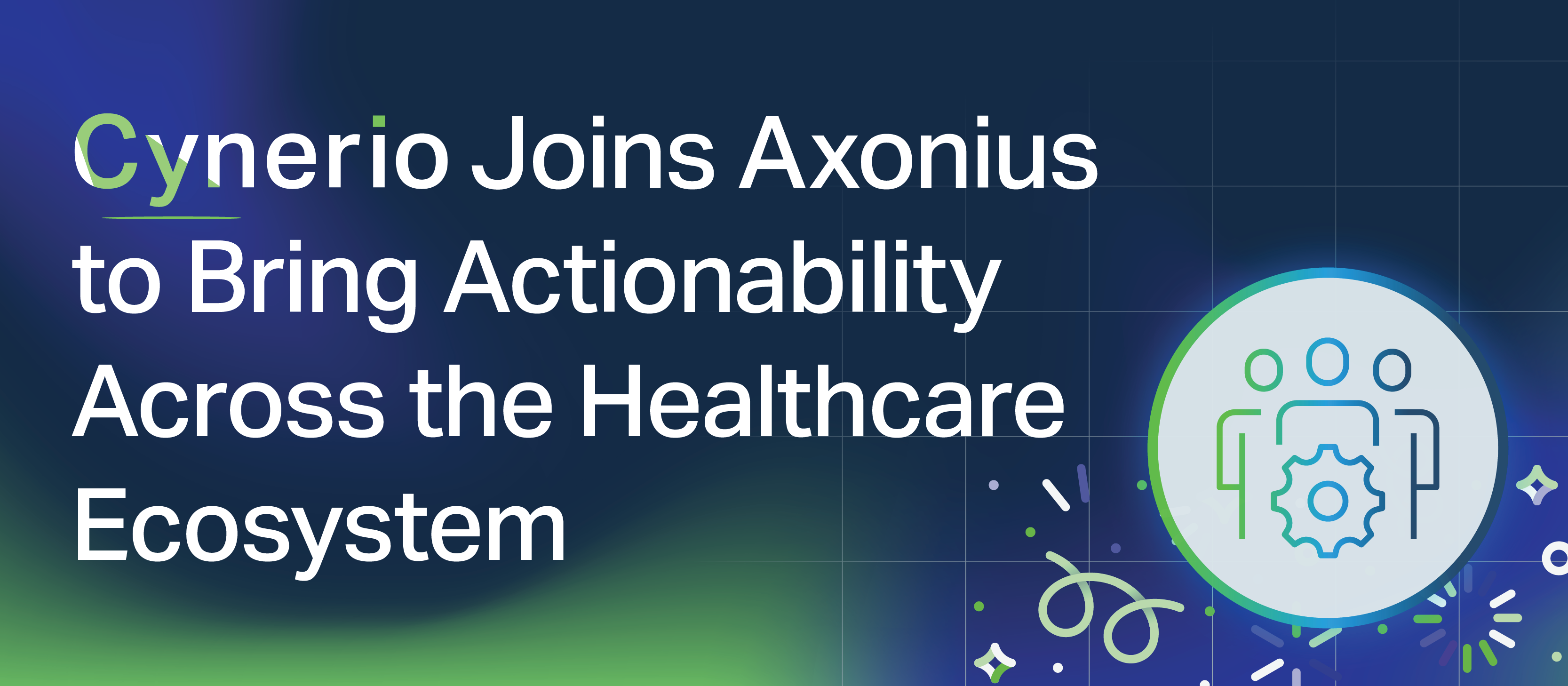Cynerio Podcast: COVID, Telemedicine & the Internet of Targets

In a recent podcast, Cynerio’s CEO and co-founder, Leon Lerman, sat down with Dr. John Halamka, emergency medicine physician and president of the Mayo Clinic Platform to talk about the post-COVID "New Normal," how much the pandemic has already changed the healthcare industry’s use of technologies, and how we can expect the industry to evolve from here.
The Rise of Telemedicine
“You could argue that COVID changed hospital executives’ perspective of care at a distance,” says John Halamka. If there’s a way to stay socially distanced, they’ll take it. Medical staff and patients are beginning to demand virtual visits and the demand doesn’t end there.
Smart medical tech can give patients more independence and it can give health professionals much more flexibility in terms of how care is administered. “We’re not just talking about personal visits,” Halamka says. “But in-home diagnostics, in-home remote patient monitoring.”
Pre-COVID, healthcare seemed to be en route to remain traditional, with the brick-and-mortar hospital seen as the one and only medical haven. The pandemic has changed all this. Today, the demand for “care at a distance” is on the rise among executives, healthcare professionals, and patients.
Between March and May 2020, telemedicine became the de facto method of care at the Mayo Clinic, with a 1000% spike in virtual visits. “Once you’ve got it,” says John Halamka, you “don’t roll back.”
Telemedical Security Challenges
We’re definitely not rolling back and telemedicine is here to stay. But with every leap forward, new challenges rear their heads. “There’s much more IoT activity now,” Halamka says. “And remember, IoT is the Internet of Targets.”
Cyber Attacks Are Up & Targeted at Healthcare
Healthcare has always been an easy target for hackers because medical IoT devices are inherently difficult to secure. But since the beginning of COVID and a 300% overall increase in fraud and cyber attacks in every sector, healthcare has come under even more fire with a disproportionate number of attacks targeted at hospitals, clinics, and medical research labs.
To add fuel to the fire, the “sophistication of attackers is very low because it’s so easy to attack hospitals with more and more vulnerable devices,” says Halamka. Practically any amateur hacker can break into a clinical network today and we’ve got to worry about simple attacks right alongside state-sponsored attacks with the sophistication of WannaCry and Petya.
Virtualized Healthcare Is the New Normal
As telemedicine increases in prevalence, healthcare organizations must adjust to a new brand of clinical ecosystem where bring-your-own-device and work-from-home policies are the new normal. The pre-COVID world where “the boundaries of your hospitals [were] the four walls of your address [is] gone forever,” says Halamka. “The big challenge [for healthcare security teams] is the new normal of increasingly virtualized healthcare delivery while dealing with an expanded attack surface.”
Defending Clinical Networks
Network security revolves around segmentation, limiting the attack surface, and keeping track of every connected device. This gets more complicated in a clinical environment. Thousands of medical IoT devices connect and disconnect on a daily basis at any given healthcare site and “keeping track is impossible,” says Halamka. To make the impossible possible, hospitals need to build AI and machine learning into their security strategy.
Boosting Healthcare Cybersecurity with Machine Learning
Achieving durable healthcare cybersecurity posture is only possible with AI and machine learning, Halamka insists. “Machine learning . . . enables a computer to . . . churn through massive numbers of possibilities and identify variation” and threats. Without it, hospitals will remain vulnerable and face increasing risk every day.
The Digital Health Legacy in a Post-COVID World
We’re now in the midst of a paradigm shift into widely practiced digital healthcare. Cybersecurity and threats aside, the adoption of digital healthcare technologies expedites the care process, gives patients more control over their own care, and provides everyone with the tools to deliver quality care from a distance in the face of pandemics and other unprecedented emergency scenarios.
However, despite the widespread digitization of scores of industries, healthcare resisted the adoption of a digital health culture. “Virtual care delivery was expedited by COVID and shifted the [healthcare] industry,” says Halamka.
Despite the tragedy of the virus, it has given us an unprecedented advantage and forced a global shift into digital healthcare and digital healthcare provides disadvantaged communities everywhere access to the same quality of care as anyone else. Battling COVID is a global effort and we can use it, Halamka says, as “an opportunity to create a new normal in economies throughout the world that is far better than our legacy.”
To listen to the full podcast, click here.



.png)




